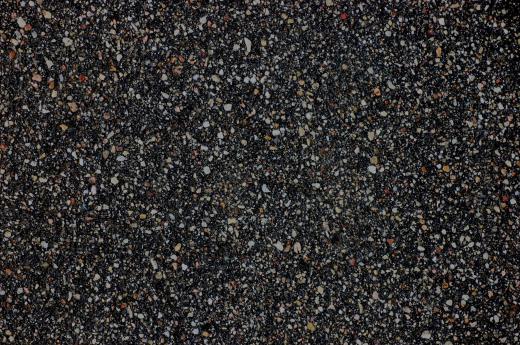Roller-compacted concrete (RCC) is a relatively dry mixture of cement, aggregate, and water. It tends to use different ratios of the same basic materials as other concrete, which can result in the mixture being somewhat more dry. Due to the fact that roller-compacted concrete can use a smaller amount of water, it may generate less heat during the curing process. This can make it useful in a variety of different applications, especially in very large pours such as those involved in dam construction. The name roller-compacted, or rolled, concrete comes from the fact that the mixture is generally tamped down with vibrating rollers after it is poured.
The two main differences between roller-compacted concrete and other varieties are its relative lack of slump and overall dryness. Slump can be measured by compacting concrete into a conical shape and then examining its behavior. The distance from the original top of the cone to the position that the concrete settles into is referred to as slump. Some types of concrete collapse entirely, while others settle in a somewhat uniform manner. Due to the mixture ratios and lack of water, rolled concrete tends to hold the shape and settle very little.

Between its lack of slump and lower heat generation during the curing process, rolled concrete can be well suited to large pours. Excess heat can cause a number of issues in thick concrete sections, such as cracking. One way this can be dealt with is successive smaller pours, which can be time consuming and costly. Roller-compacted concrete may also be poured in sections, though it is typically capable of supporting weight immediately afterward due to the lack of slump. This can allow heavy equipment to move onto the new pour and set up the next section quickly.
Another use for roller-compacted concrete is paving. There are a variety of ways that it can be used for paving, though one typical method involves a layer of rolled concrete being covered in a layer of asphalt. Since roller-compacted concrete can support weight immediately after being poured and generates little heat as it cures, it may be possible to quickly construct new roads using this method. In some cases, vehicles can drive on a roller-compacted concrete and asphalt road immediately after the paver has passed over. Such a road may then be open to traffic in as little as a few hours after the process is complete.
